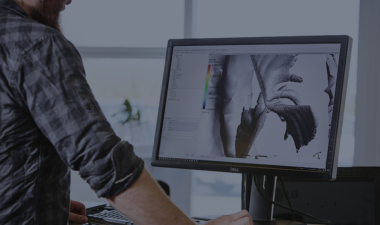
Strong CFD skills in FRECON boost development work at Keofitt
Effective cleaning of sampling valves is essential for reliable laboratory results in the food processing industry. In close collaboration with FRECON and our CFD expertise, Keofitt has documented and optimized flow conditions in their sampling valves.
Using CFD for simulation has been educational for Keofitt, who aims to bring their experiences into play in the further development of sampling valves.
Keofitt is the only company in the world that exclusively produces sampling valves and equipment focusing solely on sampling. The company’s founder developed “the sterilizable sampling valve” 40 years ago, and since then Keofitt has worked to raise awareness and knowledge of what is required to take a representative sample during the production of e.g. food.
Testing of cleaning methods via simulation
Computational Fluid Dynamics (CFD) is an appropriate tool for ensuring the proper flow of liquids and gases. Thus, FRECON’s CFD skills came into play when Keofitt wanted to document and streamline the cleaning of sampling valves e.g. for dairies or breweries. Keofitt already use other types of simulations and tests to ensure effective cleaning of their valves, but CFD opened up new methods to try.
“The valves will typically be cleaned with CIP liquid or water vapor. With water vapor, a high flow is achieved at high temperatures, which streamlines the cleaning process. However, this method is not applicable when the user of Keofitt’s valves is dealing with products that do not withstand heat. CIP fluid is typically used in those cases,” says Lead Design Engineer Arne von Eitzen from FRECON, who has solid competencies in fluid dynamics, CFD and FEM.
Visualization and calculation of flow conditions
The collaboration between Keofitt and FRECON aimed to visualize and calculate the flow conditions in the sample drawing valve, to modify these and subsequently recalculate whether the flow conditions had improved.
The goal was to achieve higher velocity and higher turbulence intensity inside the valve chamber by using either water vapor or CIP liquid, which can be achieved by modifying the geometry of the valve. With this method, you avoid producing and testing several prototypes and hit the target right away.

